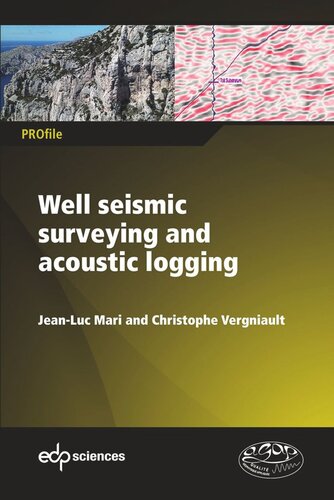

Most ebook files are in PDF format, so you can easily read them using various software such as Foxit Reader or directly on the Google Chrome browser.
Some ebook files are released by publishers in other formats such as .awz, .mobi, .epub, .fb2, etc. You may need to install specific software to read these formats on mobile/PC, such as Calibre.
Please read the tutorial at this link: https://ebookbell.com/faq
We offer FREE conversion to the popular formats you request; however, this may take some time. Therefore, right after payment, please email us, and we will try to provide the service as quickly as possible.
For some exceptional file formats or broken links (if any), please refrain from opening any disputes. Instead, email us first, and we will try to assist within a maximum of 6 hours.
EbookBell Team

4.3
8 reviewsApproaches that are typically applied in deep exploration geophysics, combining different seismic and logging methods, can be technically adapted for certain geotechnical or hydrogeological surveys or some site characterizations in the framework of seismic hazard studies. Currently it is entirely feasible to implement this type of geophysical surveying if the situation requires. After reviewing the current state of knowledge regarding borehole measurements of subsurface shear velocities applied to the geotechnical field, this book illustrates the feasibility of carrying out vertical seismic profiles (VSPs) and logs in this field. This approach also illustrates the value of combining velocity measurements of formations provided by borehole seismic tools (VSP) and acoustic (sonic) tools. An innovative example of the application of borehole seismic and logging methods is then presented in the case study of a relatively near-surface (from 20 to 130 m) karst carbonate aquifer. It shows how a multi-scale description of the reservoir can be carried out by integrating the information provided by different 3D-THR surface seismic methods, full waveform acoustic logging, VSP with hydrophones, borehole optical televiewer and flow measurements. In this book the authors provide readers with guidelines to carry out these operations, in terms of acquisitions as well as processing and interpretation. Thus, users will be able to draw inspiration to continue transferring petroleum techniques and other innovative methods for use in near-surface studies.